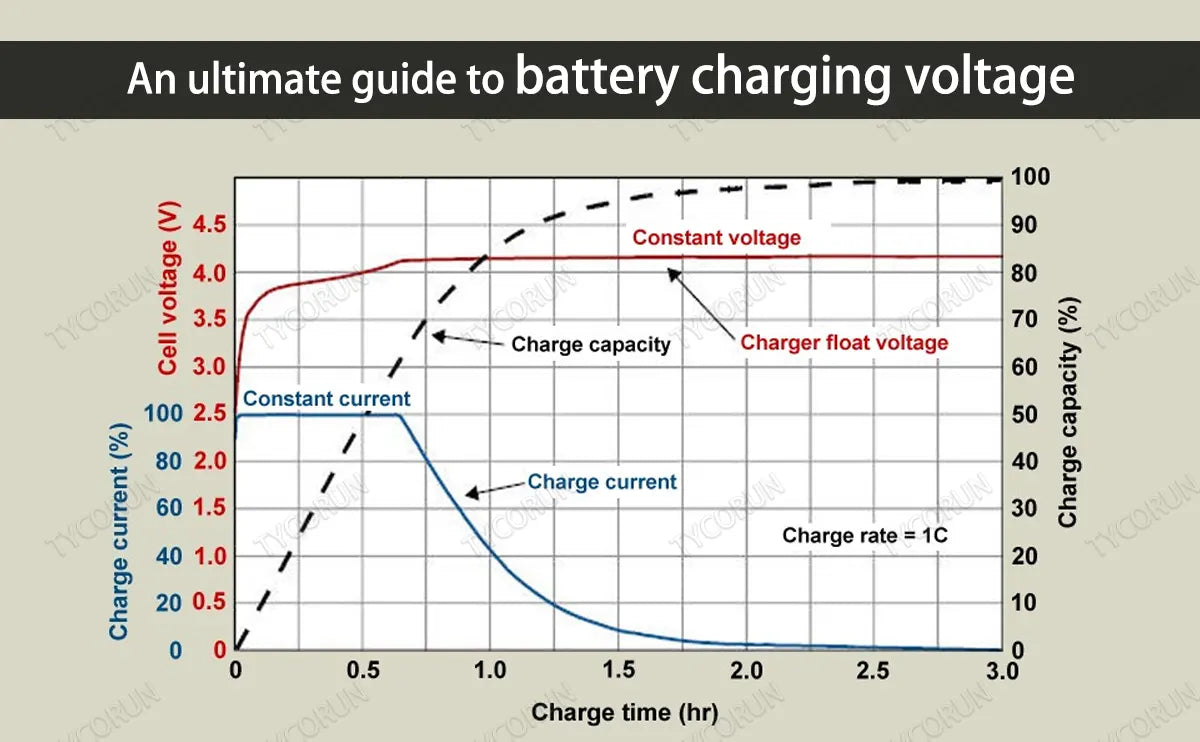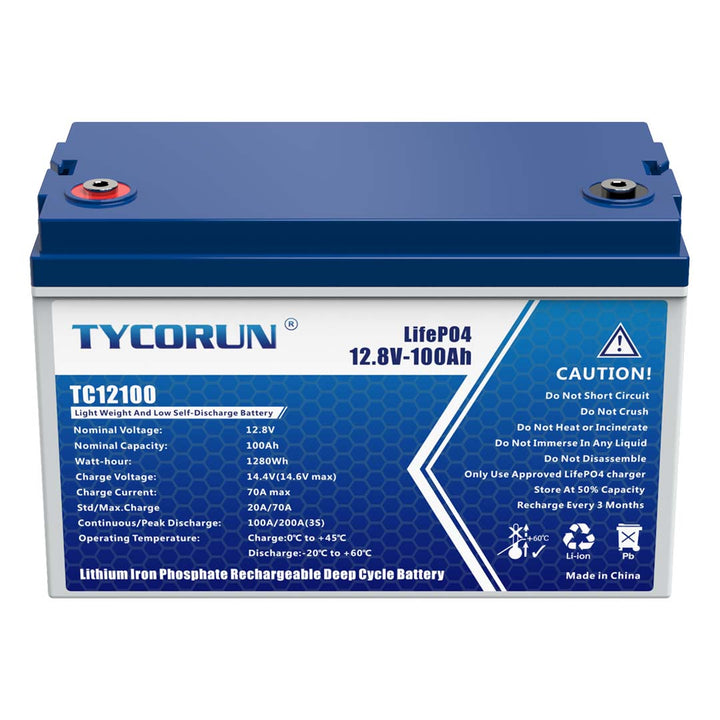
- What is battery charging voltage
- What happens if i use a charger with higher voltage
- What is too low voltage to charge a battery
- Charging voltage for different battery types
- Is higher voltage better for charging
- Factors influencing charging voltage
- Battery voltage at different charging level
- What lithium-ion batteries have a high charging voltage
- What are the risks of overcharging and undercharging
- How to choose the right charging voltage
- Conclusion
1. What is battery charging voltage
The life and performance of a battery depend significantly on the battery charging voltage and the charging equipment. To ensure a long service life and high-quality performance of your batteries, you must ensure you are implying the right battery charging practices. In this article, you will read about different battery charging voltages, the right charging voltage and much more.
2. What happens if i use a charger with higher voltage
Using a suitable charger is highly recommended according to the manual. Moreover, if a higher voltage charger is used causing the battery to exceed its safe capacity, potentially, it can lead to overcharging, overheating which can cause safety hazards risks causing pressure buildup.
It can also lead to damaging of the battery reducing the longevity, capacity and overall performance. Usage of higher voltage chargers can also lead to cell imbalance, disruption of chemical reactions within the battery and also void the batteries’ warranty. To ensure safety and battery's optimal performance, always adhere to the manufacturer’ s specified charging voltage and guidelines.

3. What is too low voltage to charge a battery
If the charging voltage is too low, the battery might not reach its full capacity, and certain chemical reactions necessary for proper charging may not occur as intended while the safety risks related to low voltage charging is less.
However, the latter can negatively affect the battery's internal chemistry and stability over time, moreover, long-term charging at low voltages accelerates wear and degradation, shortening the battery's lifespan.

4. Charging voltage for different battery types
Every battery is differently assembled. What works for one may not work for the other. The ideal battery charging voltage varies according to the batteries. Following are a few battery types along with their battery charging voltages:
① Lead-Acid Batteries: These batteries are a part of backup power systems like UPS and vehicles. The battery charging voltage for a lead-acid battery varies with the type, charging method and purpose of the battery. Usually, the charging voltage ranges from 2.25 to 2.45 volts. Upon charging, a lead-acid battery passes through three stages; bulk, absorption and float. This also leads to a variation of voltage in these stages.
Pro Tip: Always use a battery charger designed for lead-acid batteries only, as they can detect the different stages and charge accordingly.
② Lithium-Ion Batteries: These batteries are most commonly a part of electric devices like household energy storage, solar energy system and electronic vehicles. The battery charging voltage ranges between 3.6 to 4.2 volts. Like lead-acid batteries, lithium-ion batteries have different stages of charging. Lithium-ion batteries require a constant voltage to charge safely. The constant current and the constant voltage are required in this type of battery. In other words, charging Lithium-ion batteries requires a set current limit ranging until it is completely charged.
The charge circuitry changes to the constant voltage mode when the battery reaches its final voltage. This helps maintain the battery's final voltages of almost 4.2 volts.
Click on the picture for product details of Tycorun 12V 100Ah lithium deep cycle battery
Pro Tip: Use the lithium-ion battery charger only, as these batteries are very sensitive to overcharging. When charged more than the recommended range of battery charging voltage, these batteries get internally damaged. Moreover, the battery capacity reduces, and safety hazards like fire or explosion may also occur.
5. Is higher voltage better for charging
Most people might think charging with high voltage will charge battery fast but it is wrong. Using high voltage will damage battery, it shortens the lifespan of the battery.
Every battery has its limit, No matter how much voltage you give, it only uses the voltage that it needs and may cause overheat.
Overheating can damage internal components of the battery such as plates, and their electrolyte, and the battery will expand and sometimes explodes.
6. Factors influencing charging voltage

Certain factors affect the battery charging voltage. Since voltage directly affects battery performance, it is essential to know these factors and make your batteries last longer. Here are top 5 factors influencing charging voltage:
Temperature: Temperature has a direct effect on the performance of the battery. Extreme hot and cold weather conditions directly affect the lifespan, charging characteristics and battery capacity.
State of Charge SOC: The battery's charge amount is known as the state of charge. Like a fuel tank, if the battery is more discharged, it will require a higher voltage for recharging and vice versa.
Battery Chemistry: Battery chemistry is the type of battery, and thus, the charging voltage varies accordingly.
Age and Condition of Battery: The older and more degraded the batteries are, they require extra care for voltage.
Charging Stage: Most batteries have different stages of charging. The battery charging voltage varies at every stage.
7. Battery voltage at different charging level
Actually, there are no exact values for the battery voltage at different charging levels. It varies depending on multiple factors like manufacturer, and battery type.
Use a 3.2v battery cell as an example:
|
Charging levels |
Voltage |
|
Fully charged |
3.65 V |
|
75% charged |
3.5 V |
|
50% charged |
3.35 V |
|
25% charged |
3.2 V |
|
0% charged |
2.9 V |
8. What lithium-ion batteries have a high charging voltage
Generally, lithium-ion batteries have a higher voltage than other batteries, producing 3.2/3.7 volts per cell. Therefore, their charging voltage is also higher.
9. What are the risks of overcharging and undercharging
While lithium batteries offer many benefits, they can pose safety risks if not used and stored correctly. The most common and dangerous ones are overcharging and undercharging. The main reasons are as follows:
Overcharging:
- Heat buildup
- Reduced lifespan
- Swelling and leaking
Undercharging:
- Reduced capacity
- Sulfation
Therefore, you must pay attention to prevent such risks in daily use and operate in compliance with relevant regulations and standards.
10. How to choose the right charging voltage
The right battery charging voltage is the key to a longer battery lifespan. Refer to the following guidelines on how to choose the right charging voltage:
- Consult manufacturer specifications
- Refer to the current SOC
- Understand the type of battery
- Use a battery-specific charger
- Get help from Battery Management System BMS
- Pick chargers with overcharging protection
- Look for temperature-based voltage adjustment

11. Conclusion
If you want your battery to last long and work properly, you better learn the basics of battery charging and voltage, regardless of whether you have a lead acid or lithium-ion battery.
Knowing the correct charging voltage and following the proper practices helps keep the batteries healthy, assuring they work correctly. Safety should always be your utmost priority when handling batteries and charging equipment.
Related articles: charging lifepo4 batteries, lithium battery charger, Wireless charging
















